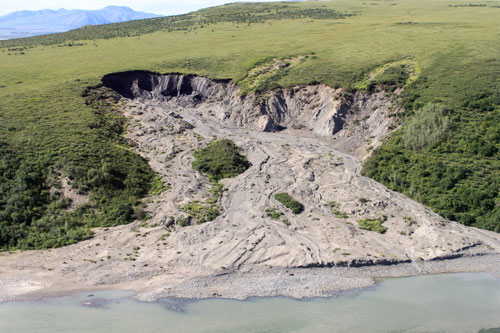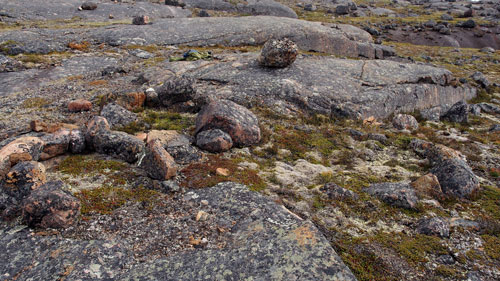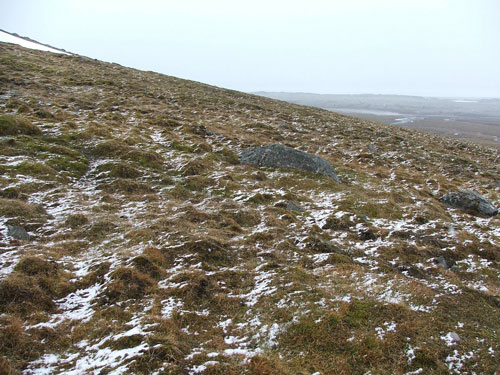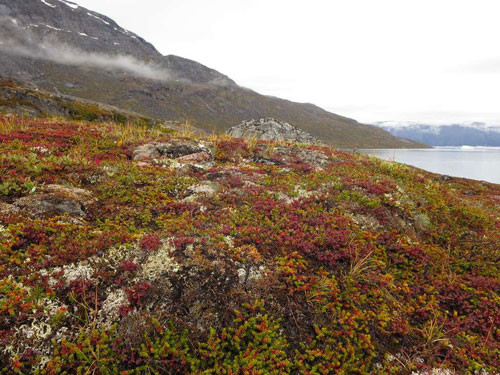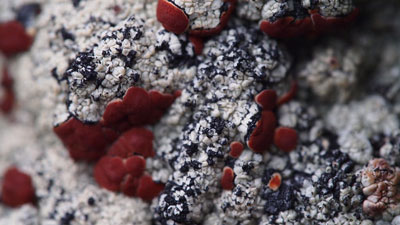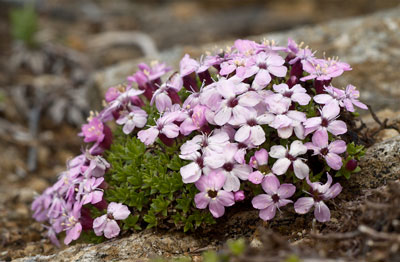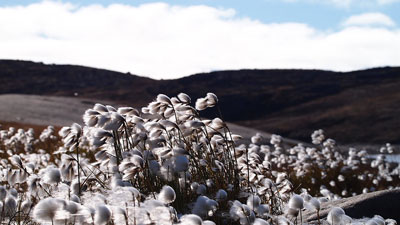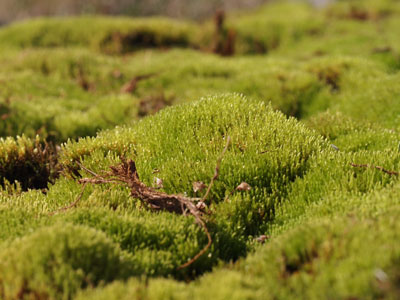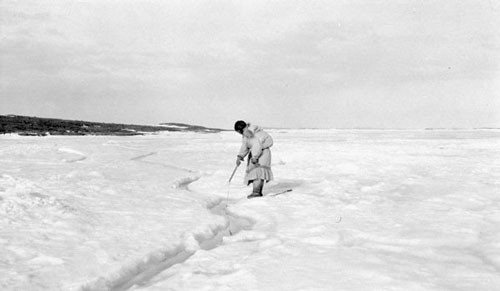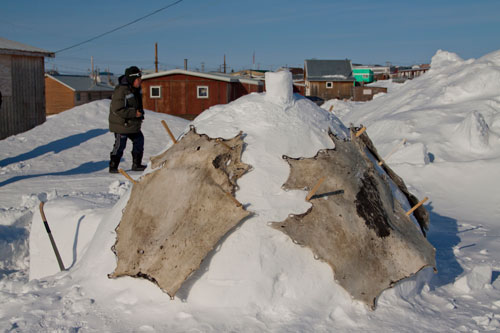Arctic Tundra
The arctic tundra is a harsh environment that only the toughest plants and animals can survive in. The habitat has a long and brutal winter and the barren landscape provides many challenges. Below are some really neat facts about the arctic tundra!
Location:
The arctic tundra can be found in the northern parts of North America, Europe, and Asia. Most of the region is found within the Arctic Circle and above the edge of the coniferous forests—latitude 60°N in Canada and Siberia and latitude 70°N in the other countries. While the arctic tundra is confined to only the areas near the north pole, other areas that are part of the tundra biome can be found in Antarctica and certian cold, mountainous regions (alpine tundra).

True to its name, the arctic tundra is part of the tundra biome, which is very large (taking up about 20% of the earth's surface). Unfortunately, the arctic tundra is shrinking as a result of climate change; the increasing temperatures are causing the permafrost to melt.
Characteristics:
The arctic tundra has several distinct features that make it a unique habitat. The permafrost, barren landscape, and cold/dry climate of the arctic tundra are all important characteristics.
Permafrost (Frozen Ground):
Permafrost is very challenging to build on, which is one of the reasons that very few people inhabit the tundra. In the summer most of the arctic tundra is covered in marshes and bogs because the top soil melts, turning firm, frozen soil into soggy, melted soil. Even on solid ground in the winter, building on permafrost can cause the ground to melt underneath, which disrupts the foundation of the building.
Barren Landscape:
Cold and Dry Climate:
The arctic tundra is the coldest and driest place on the planet. In the tundra the fall and spring seasons are basically non-existent, leaving only two seasons—winter and summer.
Winter – The winter season is incredibly long, about 8 months. Since the arctic tundra is very close to the north pole, the nights are very long. At the deepest points in the winter the sun may be gone for several weeks straight. This leads to the very cold temperatures: with an average of -34°C during the winter and in the coldest days dipping as cold as -45°C. This is not to mention the harsh wind in the barren land, which can add a bitterness that makes the tundra feel even colder.
Summer – The summer season is very short in the arctic tundra (giving plants only 50-60 days to grow each year). The temperature is much warmer and usually ranges somewhere between 3°C and 12°C. A remarkable characteristic of the arctic tundra are the long days of the summer months. At the height of the summer the days last a full 24 hours. If it weren't for this short two month period the arctic tundra would not be a suitable habitat for animals and plants to survive.
In terms of precipitation the arctic tundra recieves approximately 10 inches in a whole year, sometimes even less! The precipitation mostly comes in the form of snow during the winter season; however, there is also the occasional rainy (or even snowy) day in the summertime.
Plants:
Due to the permafrost in the arctic tundra, plants that extend their roots deep into the soil (trees for example) are unable to grow. Despite the barren nature of the arctic landscape and harsh conditions of the tundra biome, there are several amazing plants that call the arctic tundra home.
Plants with shallow roots that sprawl across the ground or can grow on a rocky terrain can survive in the tundra. Lichen is an ideal plant for the tundra because it is able to grow on rocks or other places with very little soil and can withstand freezing temperatures for long periods of time. Interestingly, lichen is a combination of algae and fungus, which act in a symbiotic relationship—the algae is responsible for the photosynthesis and the fungus holds water in the plant in order to survive in the dry climate.
The summer season is incredibly short in the tundra biome, so it is important that plants make the most of the sun. During the summer the wildflowers bloom quickly and beautifully. There are 400 different flowers in the arctic tundra. Most of the flowers that survive in the tundra are perennials; they lay dormant in the cold winters and grow again from the same roots in the summer.
The ground of the arctic tundra is marshy and boggy during the summer, so plants must be able to survive in water-logged areas. Seasonal grass thrive anywhere there is a little bit of soil and enough water. You will often see clumps of grass growing in marshy areas of the arctic tundra.
The barren landscape leads to strong winds that make surviving in the tundra very difficult. Moss will grow in wide and thick clumps, but what looks like a giant plant is actually hundreds of little tiny plants growing closely together. Growing in bundles allows plants to be sheltered from the harsh conditions, so it is an effective adaptation for many plants in the tundra.
Animals:
Different adaptations include:
- being a large animal that is able to retain energy,
- extra layers of fur,
- large paws to help walk over snow and special hooves that can traverse the rocky barren landscape and dig for food underneath the snow,
- storing fat in the body,
- changing the color of fur from brown to white for the winter season,
- small ears and tails to prevent loss of heat.
Human Presence:
The arctic tundra also has a rich history for the aboriginal people of North America because the tundra is home to the Inuit peoples. The Inuit people had to make their own adaptaions to living in the arctic tundra. There are many different families and groups of inuits, who are known for different things, for example:
- Copper Inuit – Living in regions with large copper desposits,
- Caribou Inuit – Hunting caribou to sustain life (they were very skilled in using all parts of the animal for food, shelter, clothing, and even tools),
- Nestilik Inuit – Living on the Arctic Coast; Nestilik actually means "people of the place where there is seal",
- Igloolik or Iglulik Inuit – Building igloo's for shelter in the snowy landscape,
- Western Arctic (formerly Mackenzie) Inuit – Living near the Mackenzie River.
References
Anderson, Genny. “Terrestrial Life in the Arctic.” The Arctic: Terrestrial Life in the Arctic, 13 Oct. 2003, www.marinebio.net/marinescience/04benthon/arclife.htm.
Nelson, Ken. "Science for Kids: Tundra Biome." Ducksters. Technological Solutions, Inc. (TSI), Mar. 2018. Web. 12 Mar. 2018. http://www.ducksters.com/science/ecosystems/tundra_biome.php.
Society, National Geographic. “Permafrost.” National Geographic Society, 9 Oct. 2012, www.nationalgeographic.org/encyclopedia/permafrost/.
“The Arctic People - Groups in this Region.” Canada's First People, firstpeoplesofcanada.com/fp_groups/fp_inuit1.html.
“The tundra biome.” University of California Museum of Palaeontology, University of California, www.ucmp.berkeley.edu/exhibits/biomes/tundra.php.
“Tundra.” KDE Santa Barbara, Kids Do Ecology, kids.nceas.ucsb.edu/biomes/tundra.html.
“Tundra and Permafrost | Ice Stories: Dispatches From Polar Scientists.” Ice Stories Dispatches From Polar Scientists RSS, Exploratorium, 2015, icestories.exploratorium.edu/dispatches/big-ideas/tundra-and-permafrost/index.html.
“Tundra Biome Facts.” SoftSchools.com, www.softschools.com/facts/biomes/tundra_biome_facts/171/.
Worksheets and Other Activities:
- Arctic Tundra Coloring Pages (from coloring.ws)
- Polar Bear On-Line Jigsaw Puzzle
- "What I've learned about the Arctic Tundra" Coloring Worksheet
- Help the Musk Ox Travel through the Blizzard Maze
- How many words can you make from ARCTIC TUNDRA
Word Worksheet

